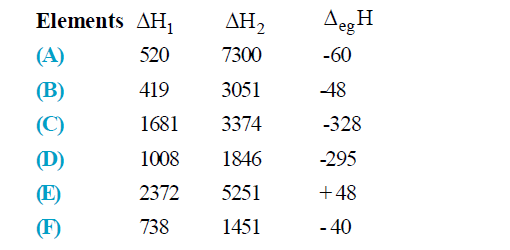A diatomic gas belonging to group 15 combines with a halogen to form a trihalides which is fairly stable and inert. The trihalide is
NCl3
PCl3
BiF3
NF3
The correct Answer is:D
To solve the question step by step, we will analyze the information provided and deduce the correct answer.
Step 1: Identify the diatomic gas in Group 15
Group 15 of the periodic table includes the elements nitrogen (N), phosphorus (P), arsenic (As), antimony (Sb), and bismuth (Bi). Among these, the only diatomic gas is nitrogen (N₂).
Hint: Look for diatomic gases in the periodic table and focus on Group 15.
Step 2: Determine the halogen that combines with the diatomic gas
Halogens are found in Group 17 of the periodic table and include fluorine (F), chlorine (Cl), bromine (Br), iodine (I), and astatine (At). The question states that the diatomic gas (N₂) combines with a halogen to form a trihalide.
Hint: Recall that halogens are known for forming compounds with other elements, particularly nonmetals.
Step 3: Identify the possible trihalides formed by nitrogen
Nitrogen can form several halides, but we are interested in stable trihalides. The common trihalides of nitrogen are:
- Nitrogen trifluoride (NF₃)
- Nitrogen trichloride (NCl₃)
Among these, NF₃ is known to be fairly stable and inert under normal conditions.
Hint: Consider the stability of the compounds formed and focus on the common trihalides of nitrogen.
Step 4: Conclusion
Based on the analysis, the stable and inert trihalide formed by the diatomic gas nitrogen (N₂) and a halogen (fluorine) is nitrogen trifluoride (NF₃).
Final Answer: The trihalide is nitrogen trifluoride (NF₃).
Summary of Steps:
1. Identify the diatomic gas in Group 15 (N₂).
2. Determine the halogen that combines with nitrogen.
3. Identify the stable trihalides formed by nitrogen.
4. Conclude that the trihalide is nitrogen trifluoride (NF₃).
Group 15 of the periodic table includes the elements nitrogen (N), phosphorus (P), arsenic (As), antimony (Sb), and bismuth (Bi). Among these, the only diatomic gas is nitrogen (N₂).
Halogens are found in Group 17 of the periodic table and include fluorine (F), chlorine (Cl), bromine (Br), iodine (I), and astatine (At). The question states that the diatomic gas (N₂) combines with a halogen to form a trihalide.
Nitrogen can form several halides, but we are interested in stable trihalides. The common trihalides of nitrogen are:
- Nitrogen trifluoride (NF₃)
- Nitrogen trichloride (NCl₃)
Based on the analysis, the stable and inert trihalide formed by the diatomic gas nitrogen (N₂) and a halogen (fluorine) is nitrogen trifluoride (NF₃).
1. Identify the diatomic gas in Group 15 (N₂).
2. Determine the halogen that combines with nitrogen.
3. Identify the stable trihalides formed by nitrogen.
4. Conclude that the trihalide is nitrogen trifluoride (NF₃).
Similar Questions
The group to which halogens belongs
View SolutionMagnesium combines with nitrogen to form a nitride, which reacts with water to form a colourless gas. The gas is
View SolutionAn element X of group 15 and period 2 exists as diatomic molecule. It combines with hydrogen and forms ammonia in the presence of a suitable catalyst.
Draw the electron dot structure of the diatomic molecule, and identify and name the type of bond formed.
View SolutionAn element X of group 15 and period 2 exists as diatomic molecule. It combines with hydrogen and forms ammonia in the presence of a suitable catalyst.
Draw the electron dot structure of ammonia.
View SolutionAn element X of group 15 and period 2 exists as diatomic molecule. It combines with hydrogen and forms ammonia in the presence of a suitable catalyst.
Write the electronic configuration of X and count the number of valence electrons.
View SolutionAn element X of group 15 and period 2 exists as diatomic molecule. It combines with hydrogen and forms ammonia in the presence of a suitable catalyst.
Identify the element X.
View SolutionWhich of the following metals do not combine directly with hydrogen gas to form hydride?
View SolutionHalogens belong to which group of periodic table. Name any 2 halogens
View SolutionWhich of the following gases combines with haemoglobin to form a very stable compound and reduces the oxygen carrying capacity of blood?
View SolutionThe first and second ionization enthalpies and electron gain enthalpy of some elements are as given below:

A metal which can form a stable binary halide of the type MX2 is (X : Halogen)
View Solution
